Antitussive drugs--past, present, and future
- PMID: 24671376
- PMCID: PMC11060423
- DOI: 10.1124/pr.111.005116
Antitussive drugs--past, present, and future
Abstract
Cough remains a serious unmet clinical problem, both as a symptom of a range of other conditions such as asthma, chronic obstructive pulmonary disease, gastroesophageal reflux, and as a problem in its own right in patients with chronic cough of unknown origin. This article reviews our current understanding of the pathogenesis of cough and the hypertussive state characterizing a number of diseases as well as reviewing the evidence for the different classes of antitussive drug currently in clinical use. For completeness, the review also discusses a number of major drug classes often clinically used to treat cough but that are not generally classified as antitussive drugs. We also reviewed a number of drug classes in various stages of development as antitussive drugs. Perhaps surprising for drugs used to treat such a common symptom, there is a paucity of well-controlled clinical studies documenting evidence for the use of many of the drug classes in use today, particularly those available over the counter. Nonetheless, there has been a considerable increase in our understanding of the cough reflex over the last decade that has led to a number of promising new targets for antitussive drugs being identified and thus giving some hope of new drugs being available in the not too distant future for the treatment of this often debilitating symptom.
Figures






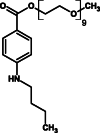


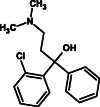
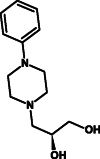
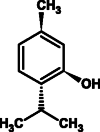

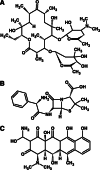








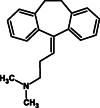



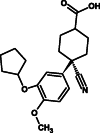












Similar articles
-
Depressing time: Waiting, melancholia, and the psychoanalytic practice of care.In: Kirtsoglou E, Simpson B, editors. The Time of Anthropology: Studies of Contemporary Chronopolitics. Abingdon: Routledge; 2020. Chapter 5. In: Kirtsoglou E, Simpson B, editors. The Time of Anthropology: Studies of Contemporary Chronopolitics. Abingdon: Routledge; 2020. Chapter 5. PMID: 36137063 Free Books & Documents. Review.
-
Qualitative evidence synthesis informing our understanding of people's perceptions and experiences of targeted digital communication.Cochrane Database Syst Rev. 2019 Oct 23;10(10):ED000141. doi: 10.1002/14651858.ED000141. Cochrane Database Syst Rev. 2019. PMID: 31643081 Free PMC article.
-
The effectiveness of abstinence-based and harm reduction-based interventions in reducing problematic substance use in adults who are experiencing homelessness in high income countries: A systematic review and meta-analysis: A systematic review.Campbell Syst Rev. 2024 Apr 21;20(2):e1396. doi: 10.1002/cl2.1396. eCollection 2024 Jun. Campbell Syst Rev. 2024. PMID: 38645303 Free PMC article. Review.
-
Unlocking data: Decision-maker perspectives on cross-sectoral data sharing and linkage as part of a whole-systems approach to public health policy and practice.Public Health Res (Southampt). 2024 Nov 20:1-30. doi: 10.3310/KYTW2173. Online ahead of print. Public Health Res (Southampt). 2024. PMID: 39582242
-
Medications for chronic obstructive pulmonary disease: a historical non-interventional cohort study with validation against RCT results.Health Technol Assess. 2021 Aug;25(51):1-70. doi: 10.3310/hta25510. Health Technol Assess. 2021. PMID: 34463610 Clinical Trial.
Cited by
-
The Prospect for Potent Sodium Voltage-Gated Channel Blockers to Relieve an Excessive Cough.Physiol Res. 2020 Mar 27;69(Suppl 1):S7-S18. doi: 10.33549/physiolres.934395. Physiol Res. 2020. PMID: 32228007 Free PMC article. Review.
-
Neuromodulators in Acute and Chronic Cough in Children: An Update from the Literature.Int J Mol Sci. 2024 Oct 18;25(20):11229. doi: 10.3390/ijms252011229. Int J Mol Sci. 2024. PMID: 39457010 Free PMC article. Review.
-
Prospective study of the efficacy of antibiotics versus antitussive drugs for the management of URTI-related acute cough in children.Multidiscip Respir Med. 2016 Jun 13;11:29. doi: 10.1186/s40248-016-0059-y. eCollection 2016. Multidiscip Respir Med. 2016. PMID: 27298726 Free PMC article.
-
Treating acute cough: wet versus dry - have we got the paradigm wrong?ERJ Open Res. 2015 Oct 23;1(2):00055-2015. doi: 10.1183/23120541.00055-2015. eCollection 2015 Oct. ERJ Open Res. 2015. PMID: 27730158 Free PMC article.
-
ERS guidelines on the diagnosis and treatment of chronic cough in adults and children.Eur Respir J. 2020 Jan 2;55(1):1901136. doi: 10.1183/13993003.01136-2019. Print 2020 Jan. Eur Respir J. 2020. PMID: 31515408 Free PMC article.
References
-
- Abelmann WH, Gaensler EA, Badger TL. (1954) Clinical evaluation of toryn, a new synthetic cough depressant. Dis Chest 25:532–541. - PubMed
-
- Abdulqwai R, McCarthy B, Layton G, Woodcock A, Ford A, Smith JA. (2013) Inhibition of ATP-gated P2X3 channels by AF 219: an effective antitussive mechanisms in chronic cough. Eur Resp J Abstract 1965.
-
- Al Aboud K. (2010) The founder of Vicks: Lunsford Richardson (1854-1919). Skinmed 8:100–101. - PubMed
Publication types
MeSH terms
Substances
Grants and funding
LinkOut - more resources
Full Text Sources
Other Literature Sources
Medical
Miscellaneous
